I have a recurring dream. It is not the same dream all the time, but a repeated theme. In the dream I am prepared to travel to a specific destination. I know the destination. In the dream, for an unknown reason are vague impediments that keep me from making progress to my destination. As the dream progresses the anxiety of being unable to remove the impediments to my destination is amplified. It is said to dream of obstacles in the way of your destination is representative of a lack of a true path in your waking life. I travel not so much for the destination, but to visit a cultural and emotional landscape seeking opinions, different outlooks, new philosophies, beliefs, and religious orientations. These are all benchmarks to help me triangulate the location of my own unique being. It does not necessarily provide insight into the destination. ¿Dónde estamos? is a different question than ¿A dónde vamos?
41 degrees 10 minutes 45.21 seconds North 73 degrees 11 minutes 21.98 seconds West Moj Roden Kraj1
(https://www.youtube.com/watch?v=WB84w0vgRzo )
The Slavs have this romantic idea of your birthplace, your Roden Kraj. It not only represents the geographic location that you were born but has a deeper connotation. It represents the materials that you are made of, your experiences and the feeling of being loved by your family. It is the primal place where you were put together in all of your aspects. The emotional and the physical connection creates a deep endless desire to seek the path back to your earthy womb. The slavs sing songs of their birthplace and ballads of their slovenske matka. Songs in which a mother’s love rivals that of the virgin herself. When people return to their Roden Kraj, burdens are lifted, you are safe, and there is a sigh and a whisper “I am home”.
Childhoods are best experienced in your memory, only when one has had enough time to properly edit those memories, where the details of the remembrance are blurry and far away. This is not to shock the memory into reconstructing the scene in your mind with exacting detail, lest you may painfully remember the parts that you amputated. I view my childhood like an impressionistic painting., To better see the bucolic picture of times past, you must take a step back to gain refinement of form and morphology. However, stepping toward the painting you see the painters brush strokes a reminder that this is an emotionally deficient two-dimensional reconstruction of three-dimensional objects and people. You see detail that looks chaotic, you see dissonance, and chronological confusion of what came first and what was last. To me the close examination is a much more accurate representation of my experience growing up with a mother who struggled with mental illness. All of my childhood memories have a duality, where every event was joyful and simultaneously painful. I can sing joyful songs of my birthplace, but only if I cry while I sing.
It was a sad day when I left home at 17 years old and a happy day when I left. Of the three options my father gave me after graduating from high school, leaving was really the only option. The only choices I really had was the destination. The destinations chosen for my life were unemotionally presented by father as, attend University, get a job, or pick up a gun and go to Viet Nam. All would be done elsewhere, and all financed by myself. In one way, it was sad and scary, in another, it was liberating, a true passage into manhood. The three destinations offered by my father came from a man that always colored in lines, lived by that obsequious code written by the greatest generation, where men are men, women are women, and everything had its place and time. Luckily, my father raised no fool. Or did my father raise a fool? Prior to this moment my world and all that I knew resided between Staten Island, NY to the south, Mont-Tremblant, Canada to the North, the Atlantic Ocean formed the eastern boundary and the Susquehanna River formed the western boundary. As Sean Taylor a free safety for the Washington Redskins said: “There are four directions: North, South, East, and West. We are going in the fifth direction, which is the direction of stories”. Like the Andalusian shepherd boy, I set out to find my treasure with one suitcase and a set of golf clubs that I won in a card game.
41 degrees 59 minutes 53.27 minutes North 21 degrees 25 minutes 31.57 seconds East Muss es sein? Es muss sein!2
Ice Cream, when you are a child, is a lot like sex when you are an adult. One of the great puzzles of my childhood is why you could not eat ice scream all the time. My parents always answered that question in various ways. “Too much is not good for you”. “If you eat too much ice cream, it will become mundane, pedestrian; it won’t be as good as you thought it was.” “Too much of a bad thing isn’t good for you, and too much of a good thing is bad for you, moderation is the key to happiness”. Frankly, moderation is the key to boredom. Ice cream is always good even if I follow it with more Ice cream. There are at least 38 flavors, and sex even has more variety. In all my life, since I have been eating ice cream and having sex (not necessarily at the same time) it has never become mundane or pedestrian. Eating ice cream or having sex is the best way to spend 15 minutes, always.
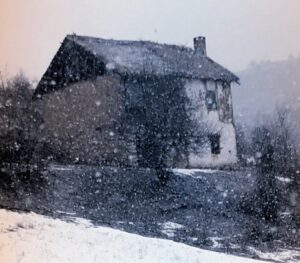
There is no evidence, no memorabilia, not even a picture, that I spent the most wonderful year of my life with her. Myriam — Mim, her name has no known meaning.
After I finished my undergraduate and master’s degree, I received a Fulbright grant to spend over a year in Marshal Tito’s Yugoslavia, in the city of Skopje, Macedonia. At that time, it was a underdeveloped province and the poorest of the Yugoslavian states. I can more generously characterize Macedonia as a quaint province that continued to preserve and practice traditional customs and folklore. It is a diverse country where the various ethnic groups moved in and out and in between each other with respectful distance and distrust, Macedonians, Serbs, Bulgarians, Kosovars, Shqiptars, Greeks, Romani, and Muslims. It was a province that had some catching up to do. A smorgasbord of people, food, music, and customs. I arrived having been a student of Russian literature and language and now having to adapt what I knew to negotiate the South Slav culture and language. The only thing common with Russia was their Communist government and some recognizable root words. I wasted no time, got to know a local family, mingled with students, engaged in awkward conversation in various languages about life, philosophy, politics, and the future of our generation, and the future of Yugoslavia. Everyone thought that Yugoslavia would crumble into smaller states defined by ethnicity as soon as Tito died. These conversations were more a reflection of the exuberance of youth than a measured diplomatic and developmental plan to solve the problems that plagued the Balkans for centuries, and with every shot of Slivovitsa we inched closer to a common solution. I quickly supplanted the mundane routine of my western existence with a mundane routine in the Balkans. Each day was research at the Geoloski Zavod and then on to the Center for Foreign Language for an accelerated program to learn the Macedonian language. The foreign exchange students from the US, Germany and Holland were placed in one apartment block of about 4-5 small apartments in Naselba Aerodrome in a southeastern neighborhood in Skopje. These are high-rise apartments in the tradition of archetecture communiste minimaliste, this desription sounds better in french, and gives the impression this architecture was a chic period trend.
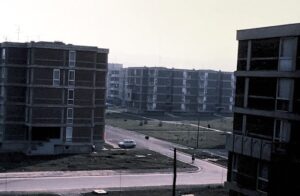
We were all assigned “sponsors”, our “Makedonski majki” our Macedonian mothers, members of the secret police that would follow our movements to be sure that we were not nefarious spies. Later we had the pleasure of meeting our individual sponsors after being arrested, interrogated, accused of taking pictures of a military base, which surrounded an ancient Rome amphitheater on three sides. It was a childish dare, that went very wrong.
It was during the daily routine of coming and going from our Apartment Block that I met Myriam. A tall, beautiful, energetic women with long chestnut hair, an engaging smile that never quit and a personality that immediately put you at ease and invited conversation. Another characteristic of Myriam is she covalently existed between cultures. Rebecca West in the “Black Lamb and Grey Falcon” characterized the slavic heart as believing that the way to make life better was to add goods things to it, this was in contrast to the West which held that the way to make life better was to take bad things away from it. Myriam fully embraced the Slavic heart. This is why most western people, particularly Americans, seek, but never really find happiness, or a true friendship, westerners are always in a process of winnowing away the bad and preserving the good instead of seeking the good things to be more joyful and allowing the bad things to be part of their complex existence. Mim had a way of taking mundane activities and turning them into what felt like a life changing event. Mim and I regularly studied Macedonian together. Previously these lessons felt burdensome, and that western tendency to purge your life of anything painful welled up in an apartment with few distractions and few excuses to escape, except for the Chinese operas broadcast on Radio Tirana. Mim was a welcome mate to this task and I thought just being with her would help me through the lessons. Myriam was excited and often amused by her clever use of new words and her sharp observations of the nuances of the language. She had a heartfelt joy of exploring music and culture of the diverse people. Learning another language and enjoying their music, and understanding their customs was in and of itself not the important point. Her ultimate goal was to learn the language and find common ground to develop friendships. She not only wanted to visit the country and the culture but to wander around the hearts and minds of the people.
One cold winter evening after studying we took a bus to a downtown pastry shop in the Kameni Cid to get some Boza and a pastry with schlag. The comfort and contentment of being with a person with an infectious joy and reveling in the simple enjoyment of a pastry with cream fascinated me. I had the same anticipation a child gets with the promise of ice cream. You begin to map out the journey from acquaintance to friend, friend to lover, where a smile and shared joy turn into a kiss, where a kiss turns into making love, and where making love and the memory of that journey is continuously being played on a loop in your consciousness, always feeding the flames of expectation. You know the path and the destination. Too much of a bad thing is bad, too much of a good thing is bad, which one is this? does it even matter? how can good be bad? or is the bad “too much” good? Good must be rationed like ice cream. How do you know when you passed that threshold of “too much”. I have never reached that threshold with ice cream, friendship, or love.
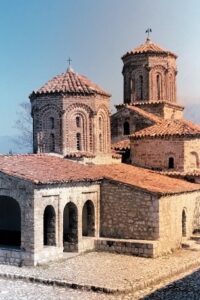
Subsequently we spent much of our time together studying language, dancing the Kolo with the locals to traditional folk music on Sunday in Fortress Park, traveling to quaint traditional villages throughout Macedonia, experiencing local customs, music, food, and folklore. Drinking our share of local wine and slivovitza, hiking in the mountains, and simply communicating with people about their life and philosophies, having become more fluent in Macedonian. I was in the constant state of adding good things to my life. This pushed back the bad and stifled those inner voices. Mim was teaching me how to be fearless. People everywhere were not strange or different, but just trying to be their genuine self and I was learning how to celebrate that fact. I was learning to live joyously, without judgement, accepting people for who they are. It made me realize that I had sex before, but I had not loved before. It was in an old abandon shepherd’s house in Kruševo where we sat down to rest from hiking in the mountains in late winter. There was a gentle and quiet snow falling and we sat without saying anything to one another. Just enjoying the moment. My mind wanting to process this moment as a freeze frame, never to forget, and never to discard. It was a kind of quiet you hear in moments like this; you swear there is a background hum, a low vibration that is the noise that life makes carrying out its involuntary processes. The sound of a universe that is alive. We do not think in words or a language, but in feelings, a gestalt. A feeling that begs to find the right words, the right syntax and the right voice to make it known to someone else. It is difficult to put these feelings, and the nature of the relationship into words, because the whole is greater than it parts, there are emergent properties. This was much more than a friendship and what was the destination?
Our yearlong cultural exchanges were coming to an end. As the end approached our conversation turned to what we were going to do after we fulfilled our academic obligations. Mim was obliged to return to Holland and I to the United States. A mutual promise to reunite in late summer to seek our destination seemed like a plan. I remember the late spring day at the train station in Skopje saying our goodbyes. It was sad moment reviewing the richness of language, culture, food, folklore, feeling of learning and accomplishment we experienced and how this relationship changed me as person. She reluctantly climbed aboard the train that followed the old Arlberg Orient Express route. As the train left the station a void began to open which allowed all the thoughts, responsibilities, and problems from my life that were overshadowed by all the good that had been added over the past year trickled into my consciousness. Incrementally that trickle became a current and subsequently a wave. All those new and wonderful things added to my life, left on the Orient Express for points west.
In a few weeks, I was to return home I would return to a failing marriage and two children, one child born five months earlier while I was in Yugoslavia, who I have never met or even had a picture. My trip to Yugoslavia was to be a family adventure, hoping to revive a relationship that had become moribund. My family did come, and the plan was to stay for 12 months, the reunion in Skopje lasted two 2 weeks. A moribund relationship was obviously dead. I was now just a few weeks from returning to my previous life. A life that was suspended over twelve months ago. What I had experienced and learned during my sojourn in Skopje not only about individual relationships, but also about the vibrancy, the beauty and diversity of the world intensified and underscored the maladies of my current situation. There was a stark contrast between these two relationships and some basic differences began to emerge. You must have the heart of a Slav. You must accept one another as you are and aspire to be no one else. You must believe that friendship is a good thing that can be added to your life. Be prepared to add more good things and have courage to seek the unexplored regions of your emotional and intellectual world. Adding a diversity of good things creates emotional networks and feedback loops that can bring joy and wonderment at any moment and come from different directions. Good relationships are based on a paradigm of complexity. This complexity derives emergent joys and wonderments that could not have been anticipated or predicted, it keeps refreshing itself. Bad relationships operate on a paradigm of simplicity. In a bad relationship, you aspire and work together to become something more perfect, statuesque, something attainable. That perfection is achieved by reducing the individual to its simplest characteristics, I am a provider, a husband, and a father. The person is isolated from the confounding, the chaotic and paradoxical aspects of their personality and their existence. These are considered flaws, errors in personality, the person must make sense and be logical. This requires you to amputate aspects of your life and personality that are perceived to be the impediments to achieving that perfection, that ideal. Your life becomes deterministic.
About a month after returning to the United States and after having a month of difficult discussion about the future as a family, we were visiting the in-laws. Our discussion lapsed into an argument about our situation. An argument that lasted until the middle of the night when finally, everyone just surrendered. It was time for us to return home which was an hour and a half drive. We set off in the middle of the night, the kids fell asleep, one in the back seat and the baby on my wife’s lap, I savored the quietness and the time to reflect on all that was said. Unlike that moment in Krusevo this quiet was broken by my mind playing with the idea of what the new paradigm might be, what would be the opportunity to realize our promise to reunite in late summer. I ended the thought with a modicum of hope as we approached the city of our home. As most things happen without warning we were plowed into by a car traveling 130 km/hour. He was a soldier rushing to get back to a nearby government airfield. Our Toyota Corolla was bounced by the larger car about 25 meters down the crossroad, and then nothing. I regained consciousness a few minutes after the accident. The car was on its side. I could hear the baby crying who was thrown from the car. I climbed out of the 1976 Toyota Corolla my vision was blurred by blood, a few passersby have already stopped. They helped me right the car and retrieve the baby from a ditch still crying, she was alive. I moved the driver seat forward as best I could and the older child in the back looked like her head went through the inside wall of the car which sent a chill through me, but there was no blood, she was alive but unconscious, no visible injuries. I then checked on my wife, the passenger door was crushed on top of her which flattened the seat to the car floor, having taken the full force of the impact. By this time, the firemen and the ambulance arrived and took myself and the two girls to the hospital, while another group of firemen continued to try to free my wife from the crushed car. She showed up at the hospital about an hour later. I found out that the car door had to be completely cut off with a torch to free my wife. Injuries to my wife were serious, and it was too early to determine if she would survive. Except for some broken bones and some serious lacerations which needed stitches, the two girls, six months old and two and a half years old, were fine, however my wife would spend a month and half in the hospital and several months after being released from the hospital convalescing and regularly attending physical therapy.
Under the weight of the seriousness of the accident and the changes necessary to survive not only the health issues, but now the financial issues, the best year of my life was being crushed into a two-dimensional narrative. Was that year an aberration, not as wonderful as I thought it was? Was it really the map of the path to joy and true love? I was now spending a majority of my time trying to shed the bad things in my life, simplify, simplify, simplify. This experience was one of the best years, and one of the worst years of my life. I found the path to joy and true love. I know what the path looks like. Then I lost the path. That thought always ended like a bad dream with the realization I would never see Mim again. Es muss sein!
26 degrees 12 minutes 14.77 seconds South 28 degrees 02 minutes 50.30 seconds East
Mama Africa3
I was traveling with my three children from Port Shepstone South Africa to Port Elizabeth. It was a long drive with 3 children. We recently passed Mthatha and were not far from Mvezo, Mandiba’s birthplace. I decided to stop in a small town to buy the kids some snacks and to treat myself to some Sorghum Beer, and some Imkomazi a curdled milk (Maas) that is popular in South Africa. We purchased the treats and sat on the curb to enjoy our food and drinks in the Transkei. I felt it a good opportunity to educate the kids about Nelson Mandela, who at that time was still incarcerated. An old Xhosa man walked by, bent over and barely lifting his feet, he looked tired from living a hard life. He looked at us with a long gaze, something many Africans did not do to white people in South Africa. He stopped and sat down next to me. He told me this story. “I was sitting in front of my house when an Afrikaner approach me and asked why I wasn’t working. I told him I was sitting in front of my home enjoying the sunshine and drinking Sorghum beer. The Afrikaner began to lecture me on how hard work, and dedication to doing a good job earn themselves the right to sit and enjoy the sunshine and beer in their later years. The Afrikaner looked at me expecting some explanation, and I said to him, sir why must I trouble myself with hard work when I am sitting in the sunshine and enjoying a beer now. The Afrikaner walked away disgusted that I did not share his ambition for work.” I am not sure what prompted the Xhosa man to tell me this story except that I was a white man sitting along the road on a workday, enjoying the sunshine and a beer in the company of my children. I thought the story was mildly amusing, and he one-upped the Afrikaner. It was not until months later that I realized the story was about racism and oppression. He wasn’t an unambitious man because he didn’t like to work, he didn’t like to work because in this oppressive society his work would never be anything more than menial and would never produce the wealth that the Afrikaners work produced. If he wanted to sit and enjoy the sunshine and some sorghum beer on a workday, why not, his life is improved, if just for a moment.
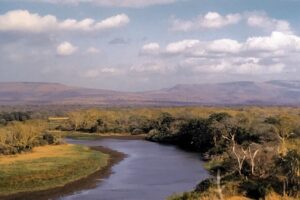
My family and I arrived in South Africa after almost 26 hours of traveling from Indiana to Johannesburg. I was excited about by first job as a Professor at the University of the Witwatersrand. The university put us up in a hotel and after a good night’s rest we were moved for about a month to a house not far from the university. This would give us time to find a place of our own. The first day we moved in we discovered that we had a house cleaner. A tall, older African women with a very pleasant personality. As we went about unpacking and organizing the house, I noticed she was in the front room talking with our oldest daughter and she was running her fingers up and down my daughters’ arm. I casually went over to see what was going on. I introduced myself, and again ran her fingers up my daughter’s arm commenting on what beautiful skin she has, and how much she admired that shade of brown. She wished that she had that color of complexion because it was so beautiful. I am Caucasian, my wife was a Native American Mexican, and our children are textbook examples of a hybrid. What this encounter sensitized me to was nuances of skin color. Colors that I had previously categorized into one of only three categories, white, brown, or black. Our house cleaner had inadvertently demonstrated that my taxonomic system of skin color was woefully inadequate and did not represent the true diversity of skin color. Was everyone as discerning as our house cleaner when it came to skin classification? I discovered whole aisles in stores devoted to makeup and products that addressed all sorts of issues with skin color. As it turns out the dark continent was not dark after all, it was polychromatic, it ran the gamut. Now I had to become an expert on the nuances of skin color. The diversity and the abundance of descriptors applied to skin color is impressive. My rudimentary and shallow classification system became obsolete. My world now demanded the notice of nuance. When I found myself in large groups of people in Africa, I previously viewed myself as the lone white man bobbing in a sea of black. Now with my new eyes I was no longer a loner, but a swatch of color in glorious continuum of color. Donde Estoy? Here among the continuum of humanity, properly classified, not as a separate group, but occupying my place among the diversity of mankind, with increasing shades of blackness to my right and increasing shades of whiteness to my left. I belonged; I had a specific place which I can only triangulate relative to someone else’s place. I was coming to realize that Africa was not a place with stark contrast, it was not bold, it did not demand your attention it coerced your attention. It did not shout at you, it whispered, it caused reflection and then loitered among your thoughts, it was patient and changed you in imperceptible increments. It is as if someone left the door to your mind open and next thing you knew a new culture and outlook moved in.
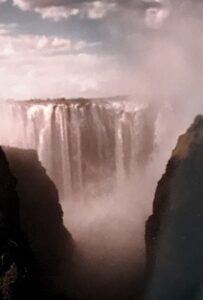
The day to day of our life was like any other place we lived. During our free time from work, family, and school, we continued to travel throughout South Africa and southern Africa, visiting Namibia, Botswana, Zimbabwe and Zambia. My daughters were beginning to pick up the local accent. We were slowly becoming Africanized. The girls went to local public schools, which during these final years of apartheid were still segregated and the government was still advocating that apartheid was about difference in culture, not race. My middle daughter came home one day from school upset that she failed a school assignment. The assignment was to cut pictures out of magazines of people who represented the “cultural” groups. The teachers were expecting that students would identify the groups based on skin color. My daughter cut pictures out representing the Portuguese, English, Dutch (Afrikaner), and people of color were grouped according to their various cultural heritage, Zulu, Tswana and Xhosa. Interestingly she grouped the Griqua people with the Afrikaners. The Griqua are a people of mixed ancestry with the Afrikaner and were officially designated as Coloureds. Many of these people spoke Khoe but they also spoke Afrikaans and were often members of the Dutch Reformed Church. I was impressed with how much she had learned about the different people of South Africa. Ahhh, the innocence and honesty of children. I told her not to worry that she flunked racism, and that I was proud of her hard work and her desire to better understand the cultures in South Africa.
Overlaid on our lives in South Africa were the escalating tensions among the African and white South Africans to abandon apartheid. Violence was increasing. Random explosions of mailboxes and garbage cans were becoming frequent, so much so, they were removed from the streets of Johannesburg. A skating rink that we frequented on weekends was blown up and luckily it happened on a weekend we decided to do something different. Necklacing became more common. It was an act of violence by Africans against Africans that were collaborating with the white government and secret police. It was a form of torture where a rubber tire filled with gasoline was place around the torso and the arms of a collaborator rendering them unable to use their arms to remove the tire, and the gasoline was set alight leading to a horrific and painful death. The South African Police were escalating their violent intimidation of freedom fighters by numerous arrests and raids in the city and the townships. People would just disappear. On the campus where I worked which was already integrated it saw an increase in demonstrations. For the first time in my academic career my class and I were tear gassed out of the classroom. This required me to learn new skill sets. You can burn off the teargas in front of your face by lighting a rolled-up newspaper on fire. This was necessary because the SAP needed to evacuate the upper floors of campus buildings to prevent the possibility of snipers picking off SAP. It was at this time I became a member of the United Democratic Front (UDF) dedicated to establishing a nonracial South Africa, “UDF Unites and Apartheid Divides”. After joining the UDF it became increasingly more difficult to get my work visa renewed. Hate was spreading among all South Africans. I remember a day that I was fixing something my house in Yeoville, Johannesburg, when I heard this drunken rant coming from the street. It was an old African man that I often saw in a nearby park who indulged in drinking this blue cleaning fluid, which contained methanol instead of ethyl alcohol, a dangerous substitute for a drunken escape. He was staggering down the street voicing his displeasure with apartheid. I went back to my work. A few minutes later my girls were yelling “Dad, Dad” come quickly” I ran to the front door to witness this old man being savagely beaten by our neighbors teenage kid with a cricket bat, claiming he had thrown a rock and broken an 8 X 35 cm glass window louvre. I ran to stop this beating, but it was too late the old man was already dead. I called an ambulance and about 20 minutes later an ambulance showed up. They informed me that this ambulance was for white people. They gave me the number for the ambulance for black people. A bakkie arrived about an hour later. They casually tossed old man in the back of the pickup and drove away. It was at that moment I realized that my children witnessed this horrific act of violence. No police ever showed up to determine what happened. What lesson does one derive from this experience? What was the takeaway for my children? I didn’t know what to say, I had no words that would rehabilitate humanity. Restore hope that people were good. We never talked about it until they were adults, by then it was a vague childhood remembrance.

People were scarred, believing that South Africa could lapse into a “Second Chimurenga” (Chimurenga is a Shona word roughly meaning “revolutionary struggle”), it was used to describe the 15-year Zimbabwe Bush War. Rhodesia was liberated in 1980, tired, beaten, and broken. Racism is a credo and it was in this context that I would come to confront my own racism.
I was anxious to do something more positive during these tumultuous times. I volunteered to teach in a program for people who worked at the Rand Mines to complete their High School education. I would teach an evening class in Soweto Township (SOuthWEst TOwnship). I remember driving out to Soweto and arriving at the school with my three children. They brought their homework and some other things to keep them busy while I taught. I signed in, received my teaching materials, and proceeded to find a quiet place for my children. One of the organizers approached me and the children, he asked if the children would like to go to a nearby house to play with the some local children, rather than be imprisoned in the room for the three hours where I was teaching. My children in unison and looking as cute as possible immediately looked up at me and said in a loud, and enthusiastic voice as if shouting out a command “DAD can we go, we want to go play”. That is when I froze! It was as if someone threw a switch in my brain, which freed all these thoughts, is it safe?, we are in Soweto, the escalating violence, the hate in the world. It then occurred to me if we replaced the black people with white people, my answer would have come easy, I would let them go play. I would have trust and confidence that they would be fine. It was because they were black that kept me from immediately making that decision. I now had to confront my racism, and where it came from. Who taught me this? I was not racist. That day I learned that I am racist, and my nonracist veneer was just an abstract idea. How long have I been living a dual existence, practicing this double standard, maintaining this intellectual apartheid! My fear was because these people are black, their incompetence was assumed, not based on any personal knowledge of their character. I was surrounded by people that wanted to improve their life, that lived decent lives, and worked hard, that were extending kindness and appreciation to me for being there, there was nothing to distrust. All of this was rolling around in my head, which seemed like a half hour, but was only a few minutes. I released the kids from the grip of my racism and told them they can go play. But my inner thoughts were still skeptical. I muddle my way through the first evening. My thoughts bounced between teaching and a resurging fear and distrust. When class ended, I had time to get to know some of the students, and their enthusiasm and focus just reinforced that my reaction is rooted in racism, not based on any discernable deficiency of the people. Shortly afterward, my kids returned, dirty, excited, talking about their new friends, and what a great time they had, how good the food was, and begging me to return on Sunday to go to church with them, being sure to emphasize that we were invited by their parents. We continued to visit our newfound friends and we did worship with them as often as we could, given the distance between the township and Johannesburg.
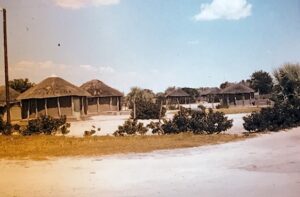
Mama Africa first taught me to discern physical difference and look at the people of Africa as individuals, see their beauty, she their differences, wallow in their diversity. Now Mama Africa was subtly working on my mind, constantly whispering to take notice of what is in the hearts of people, not blindly accepting the stereotypes which define so many groups of people. When one looks past the physical, and considers what is in a person’s heart, which is reflected in their behaviors, it is that domain which is toxic to racism.
I was being Africanized. I was slowly making deep connections to the land and its history. My recognition of people was becoming more an analysis of the intellectual and heart felt emotion of a person, than just a recognition of the external characteristics. I think Malidoma Patrice Some put it best “Whether you are raised in indigenous or modern culture there are two things that people crave: the full realization of their innate gifts, and to have these gifts approved, acknowledged, and confirmed.” These strong inner desires are who you really are. Equality and freedom demand that we consider the inner self, and it is only when one learns to love that inner self, do they find some contentment and purpose in life. I loved Africa. I loved Africa for its ebullience, where every nuance was significant, it had a timeless feeling, the actual place where God made man and literally formed him from the African clays. It is my Roden Kraj, my place of origin, my cosmic birthplace.
The violence that escalated in Africa paralleled the deterioration of my marriage. I was offered a job in Louisiana and felt that returning to the United States was the best place to pull apart an eighteen-year marriage in the least traumatic way for our children. This needed to happen if either my wife or I was to preserve anything genuine of ourselves. We each needed to better realize our innate gifts, to have these gifts approved of, acknowledged, and occasionally confirmed. We sold our house, packed up our things and shipped our household back to Louisiana. We left in late winter when the dry African Veld was like an artist’s study in brown, the landscape was nuanced as its people. The annual ceremony of purifying the landscape was beginning. Fires were lit to burn off the old grass and await the rebirth of the new luscious green grass that emerged from the charred landscape, it always gave me hope.
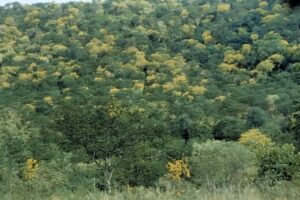
Someone warned me when we first arrived in Africa to be careful; there are people who become Africanized. Africa will become part of your being. If you leave Africa, a day will not go by that Africa enters your thoughts to loiter for a while and wells up that desire to return. “Long time me no see you Mama, They took me away from you Mama, In you there’s so much beauty, In you there’s so much life, I’ve been waiting, yearning, looking, Searching to find you, I’ve been crying, praying, hoping, That I may find you Mama, You’re my mother Africa”3 There is not a day that goes by without a whisper from Mama Africa.
We boarded our eighteen-hour flight back to the United States. It was a lot of time to think. There was no conversation, just a vibration of anxiety. What did the future hold for all of us. To pass time, I pulled out the welcome folder the university in Louisiana gave me in anticipation of my arrival. I open up the brochure and in big letters at the top was the Cajun French phrase “Allons a Lafayette” (lets go to Lafayette and “Laissez les bons temps rouler” (Let the good times roll) with pictures of happy people dancing in the park, Uhh, they dance in the park.
Muss es sein?
Notes:
1Moj Roden Kraj a Macedonia and Bulgarian Folk Song
https://www.youtube.com/watch?v=tEi84XTFcMM
2 Milan Kundera in his novel Unbearable Lightness of Being borrowed this phrase which was written on the sheet music of Beethoven’s Op. 135 the phrase defined a motif within that Opus
3 Taken from a song by Peter Tosh – Mama Africa
https://www.youtube.com/watch?v=IQUd8Kpyvto
4Rebecca West Black Lamb and Grey Falcon,1941
5Malidoma Patrice Somé, The Healing Wisdom of Africa: Finding Life Purpose Through Nature, Ritual, and Community 1999
Michael S. Zavada born and raised in Bridgeport, Connecticut. He received his B.S. and M.S. degree from Arizona State University, Tempe. He received a B.A. in Slavic Languages, and a Ph.D. in Ecology and Evolutionary Biology from the University of Connecticut, Storrs. He spent one year as a Fulbright Scholar in Skopje, Macedonia at the Geologic Institute, and the Center for Foreign Languages. He has served on the faculties of The University of the Witwatersrand, Johannesburg, South Africa, The University of Louisiana-Lafayette, was Professor and Chairman of the Department of Biology at Providence College, Providence, RI, and East Tennessee State University, Johnson City, TN. He served as Dean of the College of Arts and Sciences at Seton Hall University, New Jersey and as Dean of The College of Arts and Sciences at University of Texas – Permian Basin and subsequently served as Chair of Geosciences at University of Texas – Permian Basin. In addition to his academic interests, he played baseball at Arizona State University, participates in a variety of sports, and outdoor activities, enjoys travel, and is an instrument rated private pilot.

